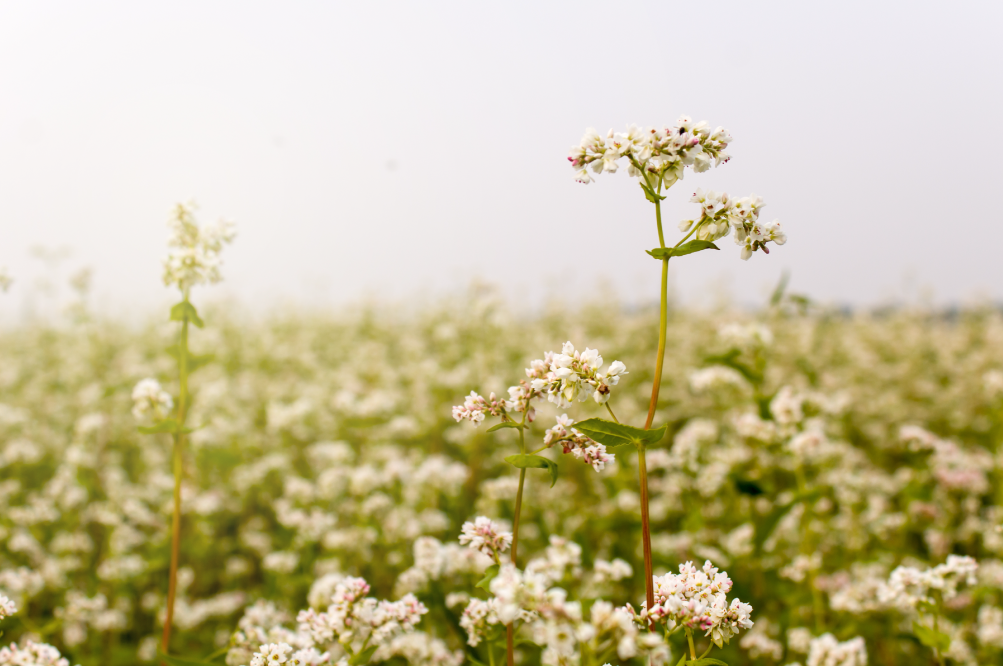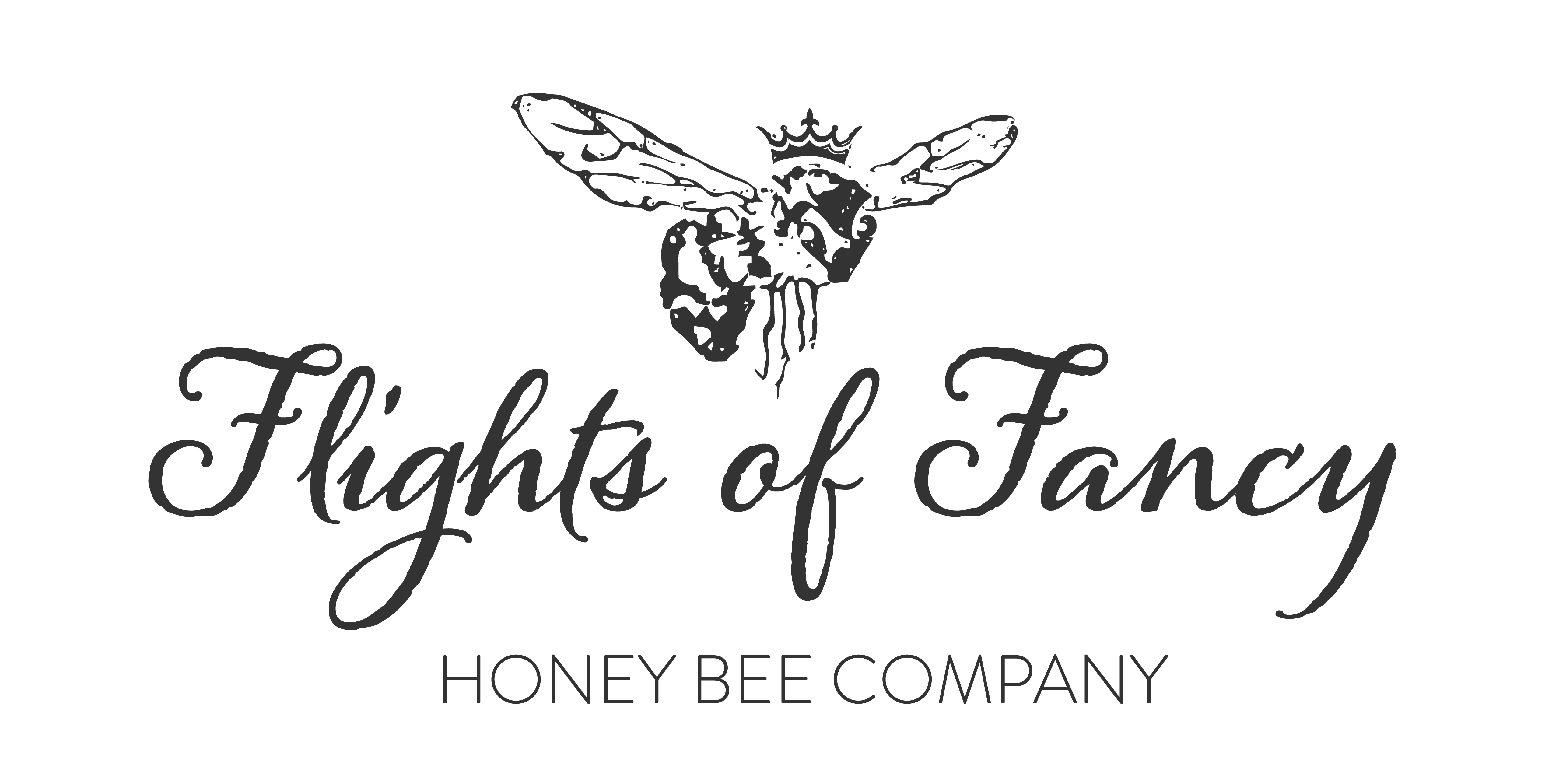Buckwheat: Feeding The Bees & Your Soil

FFeeding The Bees & Regenerating Your Soil with Buckwheat

Have you ever heard of Buckwheat honey? It’s a honey that resembles molasses in appearance, texture, and taste, but is made solely from the nectar produced by buckwheat blooms. People tend to either love it or hate it, there’s typically no in-between.
Whether you love, hate or never heard of buckwheat honey, planting buckwheat in your garden can have huge benefits for your soil and your local pollinators.
Buckwheat As A Cover Crop & Green Manure
Buckwheat has a few superpowers when it comes to the garden. First off, it is a very fast-growing plant, so when planted as a cover crop, it can outgrow weeds. So it suppresses them from growing, by taking up the space, nutrients, and water, and ultimately blocking out the light.
It also grows quickly, reaches bloom, and is ready for cutting faster than other cover crop options. This means that the growing space is out of action for a shorter period of time. Furthermore, buckwheat’s ability to break down quickly into essential soil nutrients and be swiftly reabsorbed by the soil, makes it an outstanding option for enhancing soil quality. And that’s not even taking into account its benefits to the pollinators.
Buckwheat For The Pollinators
Buckwheat is an important honey plant, hives placed on acres of planted buckwheat can produce between 45-445 lbs of honey per acre planted. Cool moist conditions produce optimal nectar production, and dry, hot conditions lead to a lower range of nectar being collected. Buckwheatproduces nectar from morning to midday. And honey made by the bees that collect nectar from its blooms produces dark, pungent buckwheat honey. For native pollinators, buckwheat provides a solid nectar and pollen source that can be grown quickly and can convert pollen and nectar-baron green spaces into a food-rich area.
Self-seeding
Buckwheat is a self-seeding annual, if you don’t want it to self-seed, make sure to cut it down or till it in once the white flowers have turned brown, this means they are no longer producing nectar or pollen for the bees but the seeds have not yet formed and will not produce plants.
Gluten-free Flour
Apart from its use as a cover crop, buckwheat also provides highly nutritious seeds that one can utilize. By grinding gluten-free buckwheat seeds with a food processor or hand mill, fine flour can be easily produced. Buckwheat flour, which is both healthy and versatile, is used in a variety of recipes such as pancakes and bread. By incorporating buckwheat flour into your cooking, you are also introducing a range of health benefits such as lower cholesterol levels, improved digestion, and better blood sugar control.
Moreover, buckwheat seeds are an excellent source of protein, containing all nine essential amino acids. This makes them a great option for vegetarians and vegans who might struggle to find complete sources of protein. Additionally, the seeds are high in fiber, minerals, and antioxidants, making them a nutrient-dense addition to any diet. By using buckwheat flour in your cooking, you can not only add flavor and texture to your dishes but also boost their nutritional value.
Companion Planting
General a powerful companion plant, a great common plant for sunflowers, and also a plant near squash, and bell pepper. Soil amender (planted as a green manure and soil “recharger”).
Where To Get Buckwheat Seeds
Let’s Feed Some Bees Program: Every Flights of Fancy order between March 20th – May 30th receives a free packet of pollinator seeds, and there are five options to choose from, one of the seed options is Sunflowers (while supplies last), learn more here.
Looking to just purchase seeds? Check out West Coast Seeds.
How To Grow Buckwheat In The Garden
Instructions
- Full sun to partial shade. Sow from 2-4 weeks after the last frost date through the end of August. Frost will kill this half-hardy annual. Sow seeds 2-4cm (1-1½") deep.
Notes
About The Author
Related Posts
7 Heavenly Honey and Tea Combinations to Try on National Tea Day
Looking for a way to celebrate National Tea Day? Check out our blog post featuring…
April 8, 2023The Power of White Clover: How This Humble Plant Can Benefit Pollinators and Your Soil
The Power of White Clover: How This Humble Plant Can Benefit Pollinators and Your Soil…
March 27, 2023





Let's Feed Some Bees: Year Two - Flights of Fancy Honey Bee Company | 4th Apr 22
[…] In addition to being quick to grow and quick to mature, buckwheat once cut, is quick to break down into the nutrients that soil requires and is quick to be absorbed back into the soil – sounds pretty great, right? And that’s not even taking into account its benefits to the pollinators. Learn more about growing Buckwheat here. […]